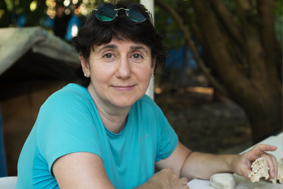RULA SHAFIQ

Bioarchaeology is the study of human skeletal remains from archaeological contexts, and it is considered today to represent the basis from which information about past populations can be reconstructed. The use of different types of evidence is essential for the bioarchaeologist to understand and reconstruct what actually occurred in the lives of past people. This research at Tell Atchana, Alalakh is directed towards the analyses of the large assemblage of human skeletal remains. The main objective is to answer questions concerning diachronic shifts in diet, health, and population affinities in relation to the different complexities of social, economic, and political settings that characterized the Middle and Late Bronze Ages in Anatolia. Several publication have addressed these issues, including “Come and Hear My Story. The ‘Well Lady’ Of Alalakh,” which deals with the skeletal remains of an adult female who was found at the bottom of a well, in which the position of the body suggested death by homicide. “Laid To Rest: LB II Burials” deals with the skeletal remains of two individuals, an adult female who suffered from a case of ‘generalized osteoarthritis’ and an infant who suffered from a chronic case of scurvy. “Evidence of a possible Elite Cemetery at Alalakh / Tell Atchana” deals with the intramural cemetery that has a selected collection of what appears to be the graves of an extended family with possible elite craftsmanship specializations.


